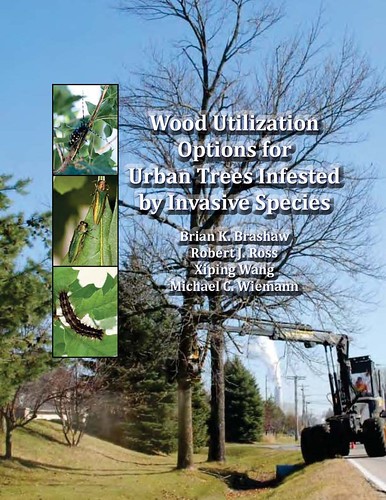A new manual released by the U.S. Forest Service offers solutions for using the millions of dead and dying urban trees infected by invasive insects in the eastern United States.
The free publication, developed by the Forest Service Forest Products Laboratory and the University of Minnesota Duluth, offers insight into the wide variety of products and markets that are available, and practical advice for considering the many options. Uses for insect-killed wood include lumber, furniture, cabinetry, flooring and pellets for wood-burning energy facilities. Last year, commemorative ornaments were made from beetle-killed trees for the 2012 Capitol Christmas Tree celebration.

“Land managers, arborists and other natural resources professionals can use the manual as a primary reference as they work on the front lines in dealing with invasive species,” said Bob Ross, project leader of the Engineering Properties of Wood, Wood-based Materials and Structures research unit at the Forest Products Laboratory in Madison, Wis.
Comprehensive information on wood technology, markets and technical information for hardwoods affected by invasive species is included, making the manual a one-stop shop for understanding how the emerald ash borer, Asian longhorned beetle, gypsy moth and thousand cankers disease are affecting hardwoods.
Non-native invasive species are causing significant ecological and economic damage in the eastern United States. For example, since being discovered in 2002, the emerald ash borer alone has killed tens of millions of ash trees in 13 states, and cost municipalities, property owners, nursery operators and forest products industries tens of millions of dollars.

